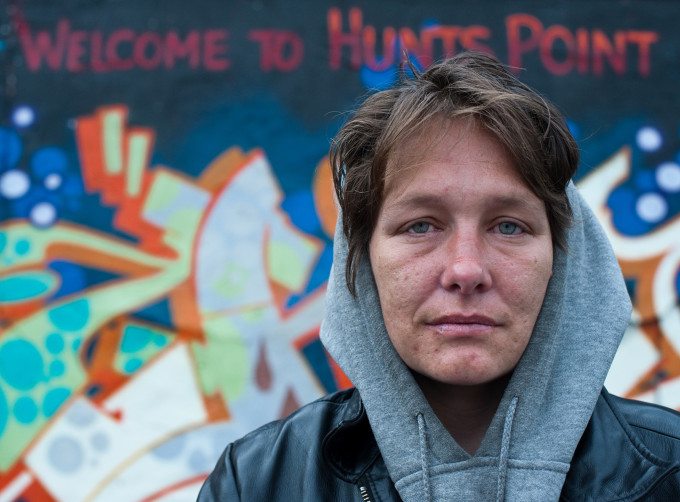
All pictures are © by Chris Arnade and used with permission.
Chris Arnade started out as a mathematician, then became a Wall Street trader, and gave it all up a year ago to dedicate his time to photography. He’s been visiting the neighborhood of Hunts Point, New York, on a regular basis since, capturing the faces (and stories behind them) of drug addicts that live there. We had the opportunity to interview him.
Phoblographer: How did you come to the decision to leave Wall Street and photograph the people of Hunts Point?
Chris: I left my job a year ago, but I’ve been photographing New York for the last ten years. That’s how I’ve always relaxed, how I’ve always spent my free time. I find myself drawn to neighborhoods that people tell me not to go to, or places where there aren’t so many tourists. If I went to Berlin or Paris, I’d do the same thing. I’ve always been that way. So it was kind of natural that I did that in New York as well.
I’d done a project for myself about people who keep pigeons on their roof, and that brought me to a lot of different neighborhoods. And that’s part of how I ended up in Hunts Point.
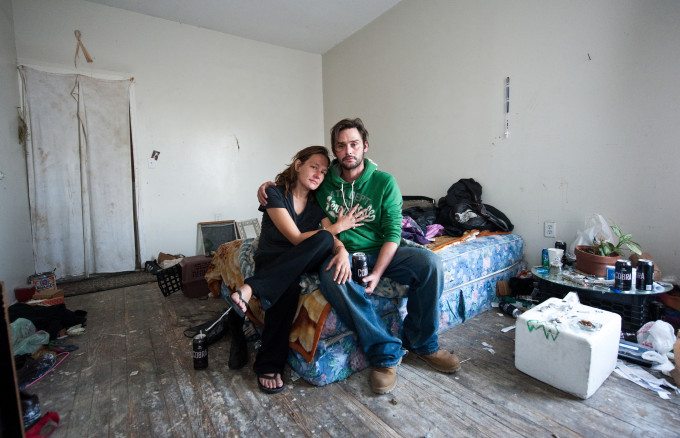
Phoblographer: What is the concept behind the Hunts Point project?
Chris: First and foremost it’s a project on addiction, it’s less about Hunts Point. I’ve always been fascinated by people who have two strikes on them, that others call ‘marginalized’. It wasn’t really planned out, it just kind of evolved. And as I’ve gotten deeper and deeper into it, I see it as part of a larger project on addiction and poverty. That’s probably the direction I’m going into next.
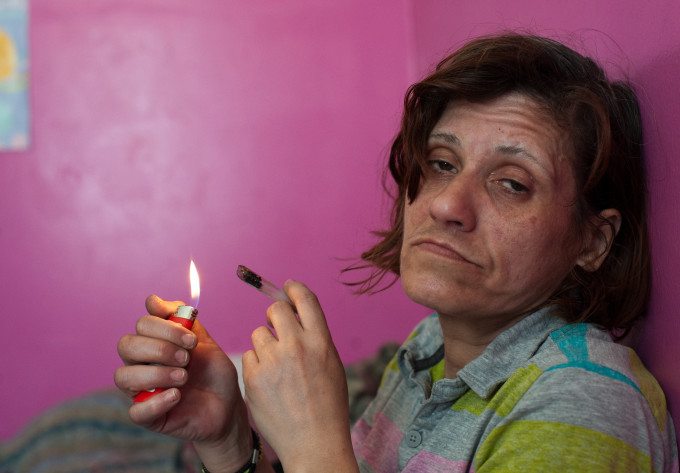
Phoblographer: How do you approach the people you photograph? They seem to let you very close to them, and the pictures show them from a very personal and private perspective.
Chris: You know, it’s just a matter of spending time, of not being scared and being open-minded. I originally went to Hunts Point two years ago, and sort of by accident fell in with talking to Takeesha, who was the first woman I met. And I’ve never felt scared, I’ve never felt threatened. I’ve always accepted any invitations—if at 2 a.m. in the morning someone says, “Hey, I want you to come back to this abandoned building, I want to show you something,“ I go. Also, I enjoy being around them, I like them. Some of them I call my friends now. I find them to be very interesting people who are smart, funny, sympathetic, honest. So I started to spend more and more free time up there, to the point where instead of going for two hours a day, I’d end up being there all day, till four in the morning, and just talk to everybody. They said to me—which I find very flattering—that I’m the first person they’ve met who doesn’t try to preach to them. I’m just there to talk to them. I don’t tell them what to do, I don’t pass judgement on them. So they get their story to be told in the way they want it to be told. And that’s appealing to them. And for me, I’m happy to be there. It’s no more complex than that.
Hunts point is 99% hispanic and black, and obviously I’m neither. I live in a nice neighborhood. It’s hard for me to say I’ll ever be part of the community, I know that. But I feel like there’s a friendship developing. I guess there’s a duality there—they get something from me, and I get something from them.
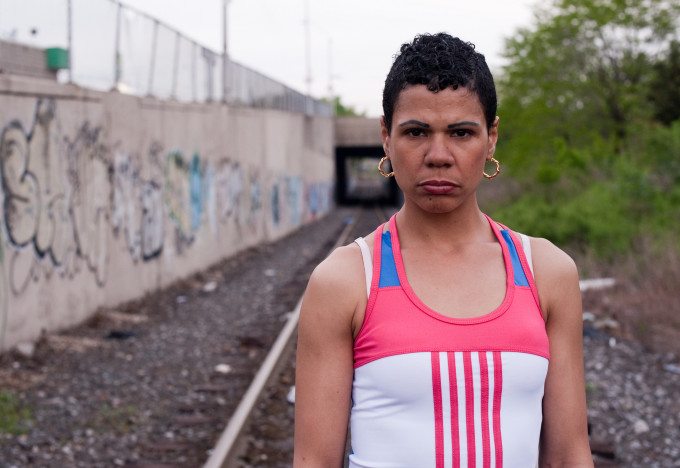
Phoblographer: You tell the stories of people at the lowest end of society, with little hope of a better life. One of the women you photographed recently passed away. How do you cope with that?
Chris: (Laughs) You know, I bifurcate, I flip-flop between being very depressed, but that’s life, you know. But I find many of the people to be very resilient, and that’s very optimistic to me. You can have this many problems and still find humor in life, and moments of happiness. So, what the fuck are we bitching about? I always jokingly say that ten minutes for me up in Hunts Point is the emotional equivalent of a whole day. There are times that I come back pretty emotionally exhausted. I usually go up there around five in the evening and come back some nights at ten, some nights at three in the morning, and I come back drained. It’s physically and emotionally exhausting. It’s how much is going on in one small moment. How I cope with it? I feel a bit bad about who I was before—a person who coped with it by just not looking. I don’t pass judgement on people who choose not to look at all. Before I went on to Wall Street, I got my PhD in math. And as a mathematician, the way you judge a problem often is looking at the boundaries. It’s similar in a culture. You can judge a lot about a culture by looking at the boundaries. When you look at homeless heroin addicts, that’s kind of one of our boundaries. We all don’t want to know what goes into making our life work. Sometimes it’s just easier not to.
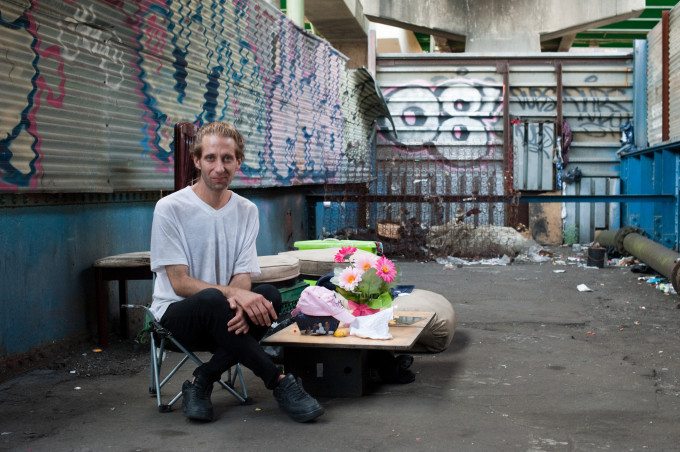
Phoblographer: So are you trying to raise the curtain a bit for people who would otherwise not have looked in that direction?
Chris: Definitely. I spent twenty years at Wall Street, and when you’re wealthy, you can write your own narrative. You have the advantage of being able to portray yourself in a positive light. The homeless and drug-addicts don’t really have a voice. So we assign them a narrative, a narrative that works for us. That narrative is that they’re lazy, they’re criminals, they’re bad people. So what I hope to do is provide these people with an opportunity to portray their narrative. And I think what happens is, when you read their stories, you’re forced to say, “Hey, wait a second! Maybe they’ve lost not because they’re lazy, not because they’re dumb—maybe it’s something about our culture!“ We need to think about that. So definitely there is a goal.
Partly, what compelled me to do this is that what I saw was so much different from what I was told. Almost everybody who is out there has been sexually abused as a child. That’s what they’re running from. Most of my subjects are very, very poor. They’re sexually abused and they flee their home. They use drugs to deal with that trauma. And once you’re an addict, you’re a prostitute. They hate the prostitution, and that adds more need for drugs. It gets very ugly.
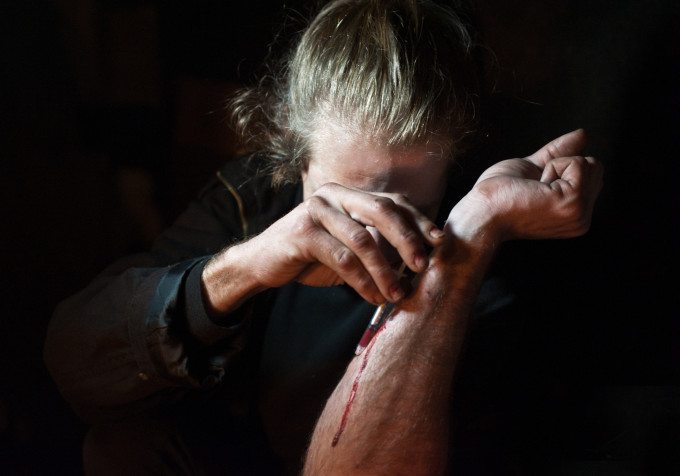
Phoblographer: Do you have a specific photographic vision, or is your photography rather born out of the situation?
Chris: I always say that what I try to do is take conventional pictures of unconventional people. So in terms of style, I intentionally choose to do more classic portraits where I ask the subject to face the viewer. I try to the best I can—because I’m only using natural light—to have light on their face, the idea being to force the viewer to see the subject the way the would see a picture of their aunt. But I’d say in the larger issue, I think I’ll take the picture to fit the situation. I don’t have a lot of training in terms of technique. I’ve never been to art school, I don’t look at a lot of other people’s work to be honest. I do whatever feels natural to me at the time.
As I got more immersed, I tried to mix the portraits with more photojournalism. I was getting tired of them looking all the same, it was making me bored. But also they request a lot. For instance, I recently took a picture that’s now been restricted [by Flickr]. I generally don’t do nudity, but one of the addicts insisted. They all ask me to take pictures of them nude, which doesn’t fit into my idea of conventional pictures of unconventional people. But I also felt that by not doing that, I was white-washing and denying the reality. I’ll be doing a lot more of that. I would like to mix things up a little bit.
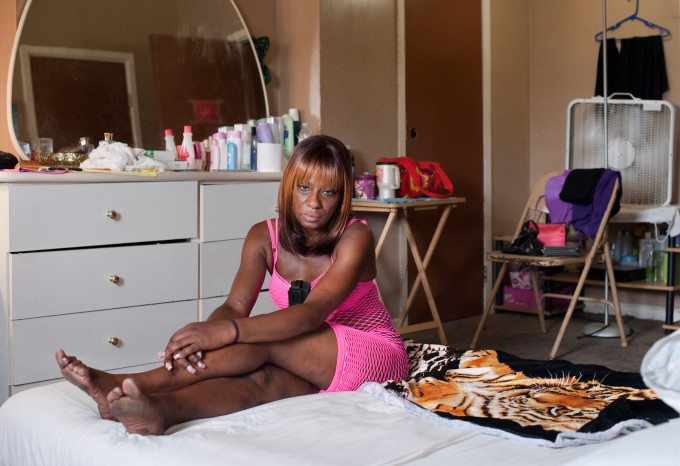
Phoblographer: Is there any specific photographic gear that you’re using?
Chris: I use a Nikon D700, and I shoot almost exclusively with a 50mm f/1.4 lens, which I absolutely love. It’s my favorite thing in the world, because most of what I’m doing is low light situations. I do have a little LED light box. If I’m in an abandoned building at two in the morning, I try to use candles. What I need is the ability to get in and out quick.
What makes a good portrait to me is the person being very relaxed, and I have found that a lot of gear never relaxes anybody (laughs). So I really believe in using as light equipment as possible. I hate digital, but that’s what I do, because it allows the person to see the picture and then delete it the minute afterwards, and that’s essential. Now that I’ve gotten a lot more trust, I think I’m going to bring out an old medium-format film camera. The problem there of course is that I’m shooting in really low light. Most of my pictures are 3200 ISO and down to the f/1.4 setting, and even then sometimes it’s 1/30 of a second. So I’m kind of limited by my situation. I don’t want to make it look artificial with flashes and lights. I know people who do that style very wonderfully, but for me, it’s just not what I want to do. I want to have the story told in context.
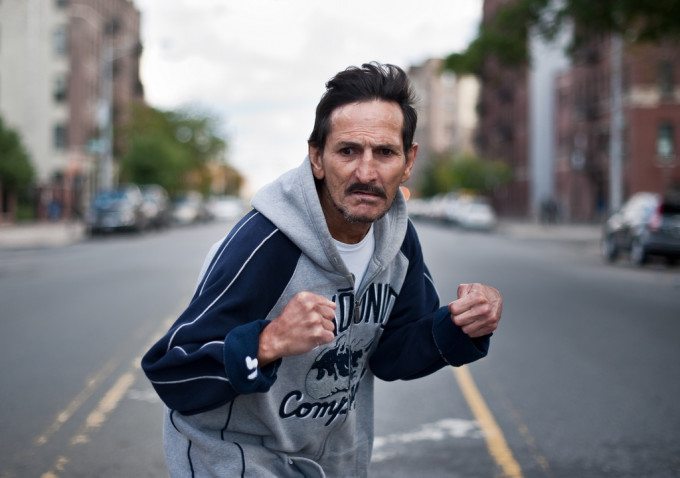
We’d like to thank Chris for taking the time for this interview!
To see more of Chris’s work, you can head over to his Tumblr page or his Flickr portfolio. He also maintains a Facebook page, and you can follow him via Twitter.
Please Support The Phoblographer
We love to bring you guys the latest and greatest news and gear related stuff. However, we can’t keep doing that unless we have your continued support. If you would like to purchase any of the items mentioned, please do so by clicking our links first and then purchasing the items as we then get a small portion of the sale to help run the website.

